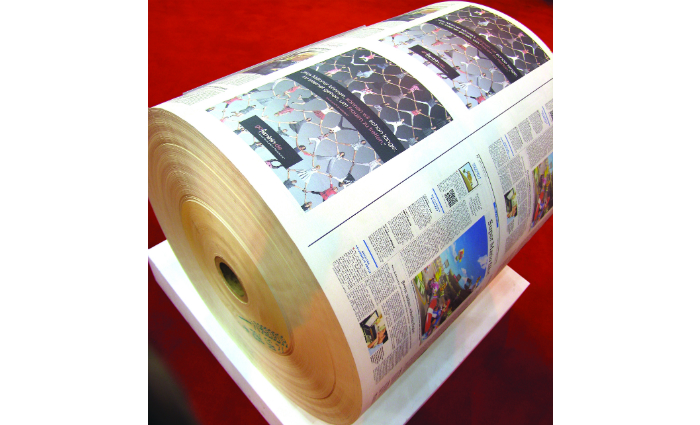
Inkjet printing has come a long way since an early scientific paper published in the Scientific American magazine in the late 1970s. That article speculated that inkjet printing technology has the potential to become a mainstream mass volume printing method at some point in the future.
In the late 70s personal computing was still to be invented, while digital concepts were also theoretical and limited to research laboratories. Since then with the massive and predicted growth in computing power and digital knowledge the inkjet technology has advanced significantly.
Also the potential of inkjet as a mainstream printing system has been greatly aided with the challenges that conventional printing has experienced as a result of the growth of the worldwide web.
No doubt traditional printing is suffering as a result of so much information available on the internet, to the point where a lot of printing is no longer required. However, the opportunity this brings to a high quality, fast, and ridiculously clean printing method such as inkjet is yet to be fully explored.
The potential to print a full book out in good quality in colour as you wait is now a reality. I regularly buy academic books that are printed on demand. This will continue to have a significant impact on book publishing, printing and distribution over the next few years, and is something book publishers and printers need to take heed of before it is too late.
Digitally printed single sheet newspapers will see a shift from advertising as the main income to high quality journalism, exactly how newspapers were when they were first published a few hundred years ago. It is a case of back to the future. The Financial Times out of London has proved that it is all about the quality of reporting, that is what counts with newspapers. Digital delivery of pure news reporting via on demand inkjet system may just what the flagging newspaper sector will need to secure its future.
Inkjet will gain more and more development focus over the next few years because of its direct relationship to the rapidly growing 3D printing sector. The 3D industry is set for astronomical growth in every part of the world in just about every sector of the economy. All of the advances in 3D printing is also driven by an unfettered growth in computer power and speed and the growth of the internet. Recently the entire panel work of a sport was reproduced on a large scale high speed 3D printing device in Australia. Already in the UK a residential house was built onsite with a 3D printing system in incredibly fast time with no waste. And 3D printing is now widely used in the medical sector particularly in the dental area.
Some of the world’s leading companies in inkjet technologies are our well known graphic arts manufacturers who are driving the industry into totally new areas, some are completely unrelated to conventional printing.
So from a single scientific paper in the late 1970s describing a new printing system a whole paradigm shift is now actually here.
Comment below to have your say on this story.
If you have a news story or tip-off, get in touch at editorial@sprinter.com.au.
Sign up to the Sprinter newsletter

As often happens in a relationship that began in the early 90’s, I agree with Phillip – Inkjet has a big future. But like most discussion of inkjet, Phillip writes as if to distract us from fact that inkjet has already arrived.
I recently used it to publish a children’s bedtime story book – Manini The Fish. 24 pages, full colour both sides plus cover, in an unusual size (225 x 157), designed to fit snugly into an international airmail envelope. It is inkjet printed on demand in Melbourne with the option of a personalized cover.
There were a few teething problems with the software used to purchase and personalize the book – if you visit Manini’s Facebook page you’ll see we are still working through that – but the inkjet component was faultless. And very easy.
From this experience, two salient points present themselves and have yet to be properly dealt with. They relate to the impact inkjet technology will have on book printing and how it could disrupt the publishers’ business model, and its’ relationship with the print industry.
First, digitization has – let’s face it – already begun to de-skill great chunks of the print industry. It has rendered redundant most of the prepress skills required to deal with film and plates. And when each page of a book is printed as variable data, there are no signatures to collate. Finished book blocks are delivered at the end of the printing process. It’s a small step to add a cover. What are the implications for for the book-binding component of the print industry?
Second, there are serious strategic ramifications for the printing industry’s relationship with the publishing industry. We have already witnessed a radical restructure of book retailing as Kindle and the like reduce the demand for printed books. A second wave of adjustment will arrive as more and more books are printed inkjet on demand, paid for before they are produced, and sent directly to the end consumer. What will that do to publishers’ distribution operations, costs and margins? What of their relationship with bookshops? How will they deal with printers?
All this derives from the amazing capacity of inkjet technology. It will only get better, faster and cheaper until it is replaced by something better.
So it’s time to recognise that inkjet is already a mainstream technology. It’s in a rapid expansion mode will only get better, faster and less expensive.
Mark Reid
Mahout Strategies Pty Ltd